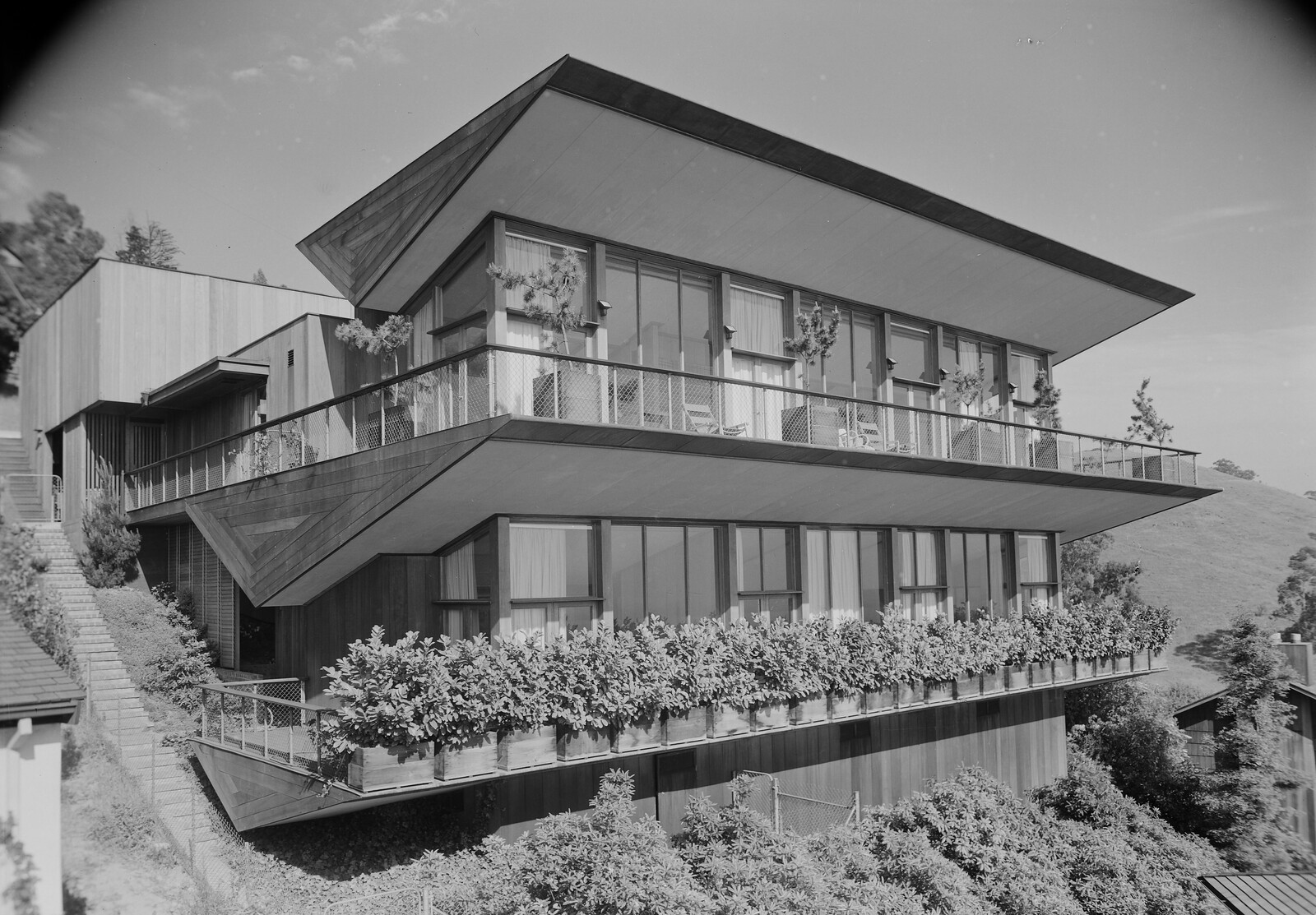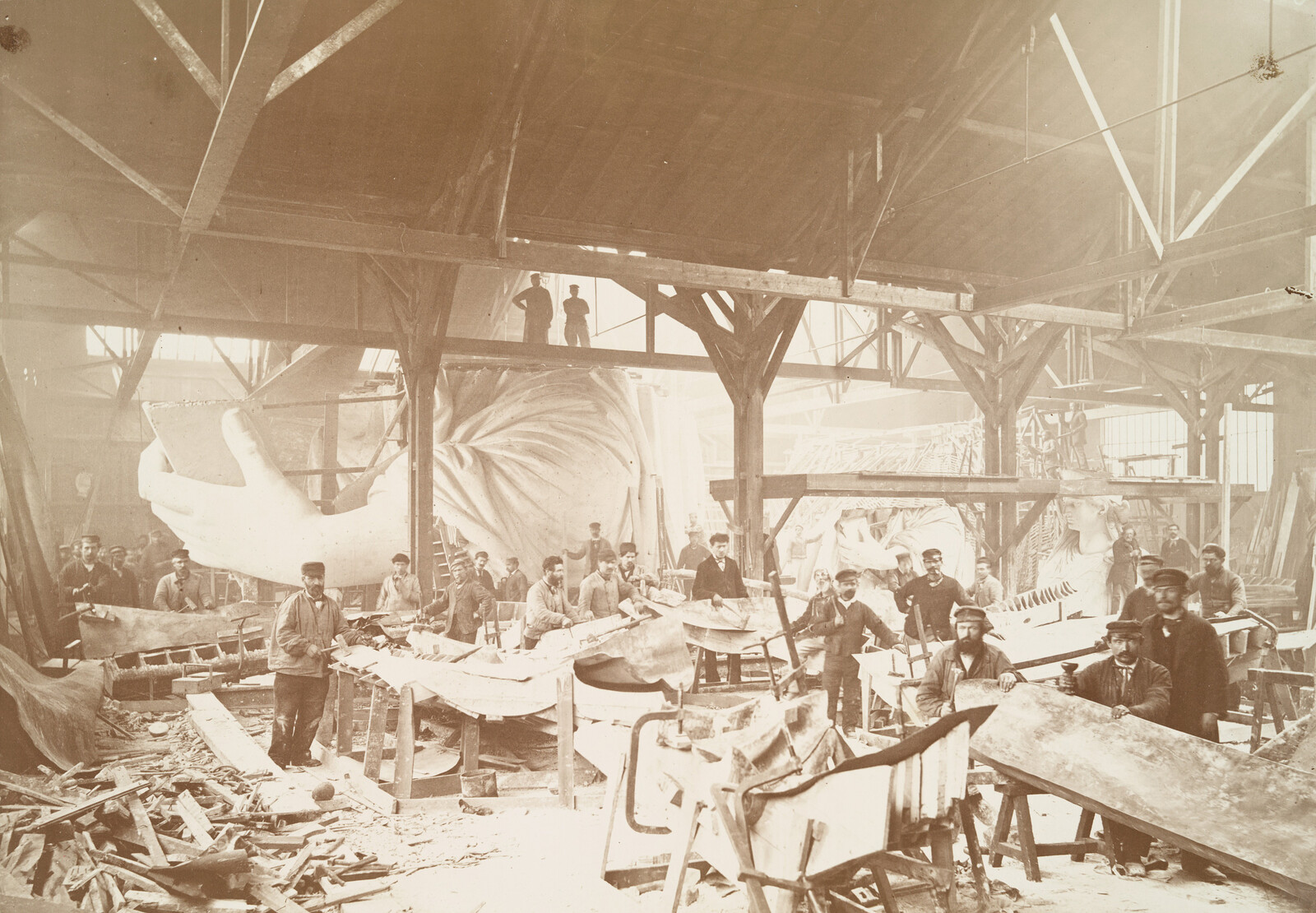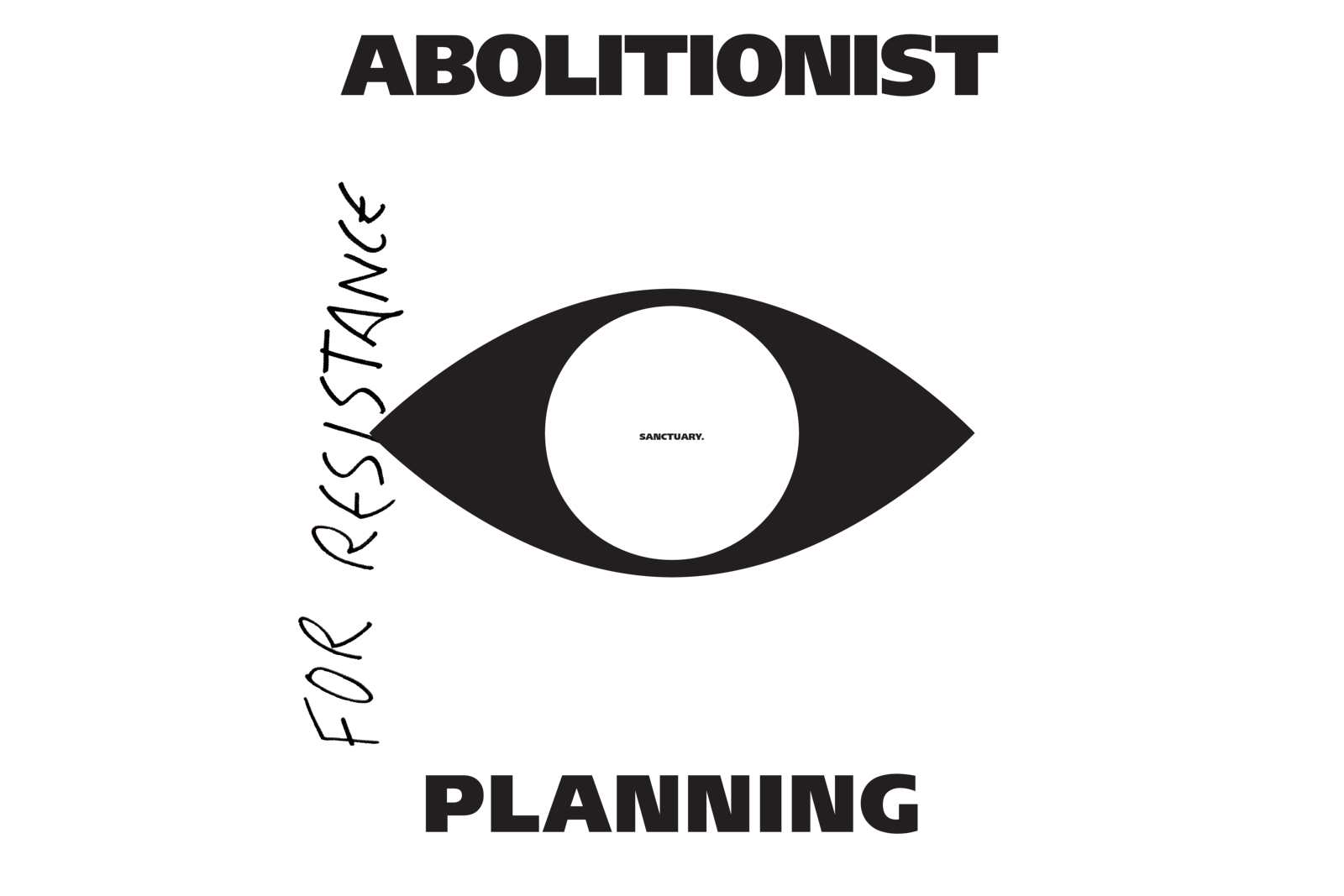[Citizenship] is an ordinary space of activity that many people occupy without thinking much about it.
—Lauren Berlant1Even the distracted person can form habits.
—Walter Benjamin2
In “The Work of Art in the Age of Its Technological Reproducibility,” Walter Benjamin insists that we most often engage architecture in a state of distraction. In observing that our perception of architecture largely takes place through acts of “casual noticing rather than attentive observation,” Benjamin does not intend to produce yet another indictment of our oversaturated perceptual faculties—a move we might expect today given the cyclical attention-panic accompanying the broad adoption of each new gadget, app, or digital network. Rather, by claiming architecture to be the first form of mass media, Benjamin insists that studying how it shapes our perceptual modes can consequently teach us how the masses more broadly learn to perceive and be—through repeated use and the gradual accrual of habits.
Extending Benjamin’s thesis about the distracted state through which we perceive the built world and how physical structures shape our habits in ways we aren’t always aware of or actively attentive to, let us consider architecture’s oblique role in producing habits of citizenship. Citizenship is fundamentally a spatial relationship, naming in its broadest conception one’s ability to participate in the civic life of their locale. And yet, as literary critic Lauren Berlant insists, citizenship is best understood not as one form of sovereignty but as a collection (or perhaps a collision) of many different relational forms, pointing to the “constellation of rights, laws, obligations, interests, fantasies, and expectations that shape the modern scene of citizenship.” Combining Benjamin and Berlant’s insights, it could be said that architecture shapes the habits of both perceiving and feeling citizenship.
To attend to how architecture shapes our experience of citizenship, then, is to work against our perceptual proclivity to take in the built environment sideways, through sustained use and in states of distraction. This essay, then, is an attempt to marshal our attention to consider the distracted and circuitous ways architecture scripts our habits of citizenship as well as various attempts to reshape those habits using architecture. What habits of citizenship does architecture produce that accrue through accumulation rather than contemplation? How might architecture generate practices of citizenship obliquely—through what we glimpse from the corner of an eye, brush with an elbow, or sense below our feet? How might the spaces and structures we routinely move through help determine our relationship to the state and our experience of feeling a part of or apart from it, as the case may be?
Let’s begin with a meditation on one the most innocuous and ubiquitous architectures of citizenship—the voting booth. While Benjamin insists that we primarily engage architecture in states of distraction, voting booths are structures designed to force its users to attain a certain amount of focus—or to at least stage the appearance of such—by quarantining us from the rest of the world. On Election Day, access to voting booths generally spans most of the waking day. Voters increasingly have had the option to cast their ballots weeks in advance or by mail, an attempt by many precincts to accommodate those who may not be afforded the time away from work or home to show up to vote. The contestation of extended voting hours in some districts along with efforts to restrict early voting days, however, suggests the concerted efforts by some to limit citizenship to those who can afford to participate. The voting booth, understood as a site where some might form regular habits of use relative to others, belongs to the physical infrastructure of citizenship.
Materially, voting booths are relatively simple structures designed for practical use rather than absorbed contemplation. They are typically constructed of flimsy-seeming plastic and perched on tall aluminum legs, offering users just enough stability to be able to scratch a line on a paper ballot or to press a button. Some booths allow users to slide a small curtain closed behind them, more fully producing the sensation of sequester privileged by modern voting. These temporary structures are typically set up inside of other forms of architecture, being lined up in rows once or twice a year within local civic spaces such as firehouses, elementary school gymnasiums, or open apartment lobbies. Their purpose is to carve out private space within larger public spaces.
The process of voting begins for most by travelling to their assigned polling station, where one proceeds to cordon themselves off from the civic space they have just entered and reckon with a ballot containing names of people the voter has generally never met. The booth separates the voter from the general public as they seek a more abstract form of intimacy with the group ballots assemble. The scale of the booth marks voting as the work of private individuals, presenting it as an act you do alone—for yourself and by yourself. The material experience of these spaces can be somewhat awkward—the flimsiness of the booth’s construction makes you feel its impermanency, which may variously serve to heighten the distinctiveness of the occasion or mark its formal abnormality. The space available for the body to take up in most voting booths, moreover, is fairly narrow, signaling that voting is an act designed for those who can fit themselves into measurable civic space.
But the plastic private voting booth of today is a far cry from the scenes and structures of voting for much of US history. Before the second half of the nineteenth century, voting was a noisy and viscerally public affair where watching others voice their decisions was part of the process. The point was to be in public and occupy civic space rather than to portion it off for individual contemplation. By the middle of the nineteenth century, however, most states had moved toward a ballot system ensconcing private voting. As literary critic Elaine Hadley notes of the similar shift taking place in nineteenth century Britain, private voting “mass produce[d] a new abstract space of privacy, or rather, mass-produce[d] two abstract spaces of privacy—the booth itself and the evanescent liberal citizen, constituted by his cognitive abstraction, who was momentarily capable of embodying his citizenship through an abstracted interest in the national or imperial good.”3 The architecture of the voting booth carves up local social space in order to make room for voters to temporarily become national subjects.
Visual artist Lonnie Holley’s 2016 art installation “In the Grip of Power” modifies the voting booth to emphasize voting as an embodied act. The booth Holley presents viewers in the space of the museum gallery seems at first glance like any other—a simple plastic and aluminum structure that one would bend down over and lean into in order to fill out their ballot in semi-private. However, if you stand back from the booth or approach it from the right side, you notice that when the user bends down to use the booth, their head becomes level with the muzzle of a handgun affixed to the outside of the booth and pointed directly into its interior. Holley describes “In the Grip of Power” as providing viewers with a stark reminder of how un-habitual the process of voting has been for many in the US. Commemorating “those that got killed along the way, literally got blown to pieces” in seeking the vote, Holley describes “the trail to vote” as simultaneously “a trail of tears.” To be in the grip of power, Holley’s work suggests, is to potentially inhabit a position of power and agency, but it can also mean being at the mercy of another. His installation reminds us of the physicality voting demands—requiring some to literally risk their bodies in order to occupy the sovereign space of the abstract and generalized citizen. Holley’s alterations to the voting booth makes visible the differential habits of citizenship this architecture has historically accommodated and encouraged.
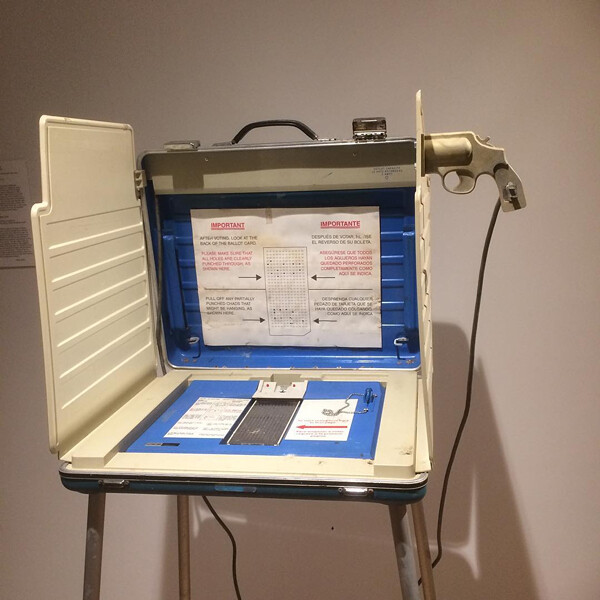

Lonnie Holley, In The Grip of Power, 2016. Photo: Chris Lines/Instagram.
While modern voting is largely treated as a private act done by the individual subject acting for themselves and by themselves, the desire to relocate civic participation to the public square and redefine citizenship as a social act of collective demand and public voice endures. The different kinds of occupations within the planned and make-shift civic squares of Zuccotti Park, Ferguson, and Charlottesville mark the desires of publics of various sorts and merits to exceed the physical, social, and affective scales of the individual booth on state-sanctioned Election Days. If voting booths secure a space for the lone voter to abstract themselves from their embedded situation within the local to become vague state subjects, physical occupations of civic space insist upon the immediate presence of people in real space. The physicality of occupation gains even more significance in the wake of rulings like Citizens United that protect the political speech of legal entities like corporations that have no corporeality. Physical occupations remind us that no matter how much we treat corporations like people, granting them free speech and the power of political participation, they can’t physically occupy space—even as they purchase and privatize it.
In the case of the Charlottesville protests of the summer of 2017, the built environment of the public square not only contained competing masses but magnetized their divergent vision of publicness. What united both the white supremacists converging in Charlottesville to defend and protect the statue of Confederate General Robert E. Lee with the protestors seeking to rebuke these efforts and deny them a public mandate was their shared sense that the built environment matters and that citizenship’s scale is local, inhabitable, and contestable. Monuments are material instantiations of competing fantasies of citizenship as well as active sites for shaping its habits. Recent conversation about the work of monuments in the past year asks us in some ways to recall Benjamin insistence in 1936 that architecture works on us in states of distractions.4 When we turn our full attention to the structures that surround us, we find that memorialization—how we commemorate the past—can never be fully untangled from how we form habits in the present.
Of course, occupation as a form of protest is an old form indeed. The recent occupations of the past few years were preceded by the Bonus Army’s summer encampment of 1932 on the muddy banks of the Anacostia River in Washington DC where they demanded payments owed to them by the federal government for their military service. We might also look to the Poor People’s March and accompanying occupation of the National Mall during the winter and spring of 1968 planned by Martin Luther King Jr. and led by Ralph Abernathy gathering a range of Americans fighting for economic justice. If the voting booth relies on a scale of sequester, these mass occupations of past and recent present not only seek to take up existing space to produce a broader scale of civic participation but also remake the architecture of the spaces they inhabit. In almost all of these cases, the occupied space is remade in some way, with makeshift structures produced in order to sustain the occupiers in practical and poetic ways, if only temporarily. However, this is not to say occupation is either inherently utopian or repressive, but that it possesses varying potentiality—a fact which both the colonizing function of occupation as well as the various causes and forces that have adopted occupation as a tactic reminds us.
Between the scale of the open civic square and the individual voting booth are, unquestionably, many other scales that induce different habits of citizenship and their varying states of attention. The residential neighborhood is one such scale. If, as Benedict Anderson has argued, nations are imagined communities, then neighborhoods constitute a different version of belonging that, while still being organized according to borders, is also held together by visible shared habits.5 A neighborhood is both an imagined community and the product of everyday routines often undertaken in varying states of distraction within communal space—walking the dog, taking the trash to the curb, moving one’s car, catching the bus, etc. But like all scales of citizenship, the neighborhood is organized by both collectivity and exclusion; for those who have been shuttled into spaces abandoned by resources and attention, neighborhood borders can prove quite difficult to transgress. As sociologist Robert Sampson has argued, despite our increasing enmeshment within global and virtual scales citizenship, life is still decisively shaped by where you physically live.6
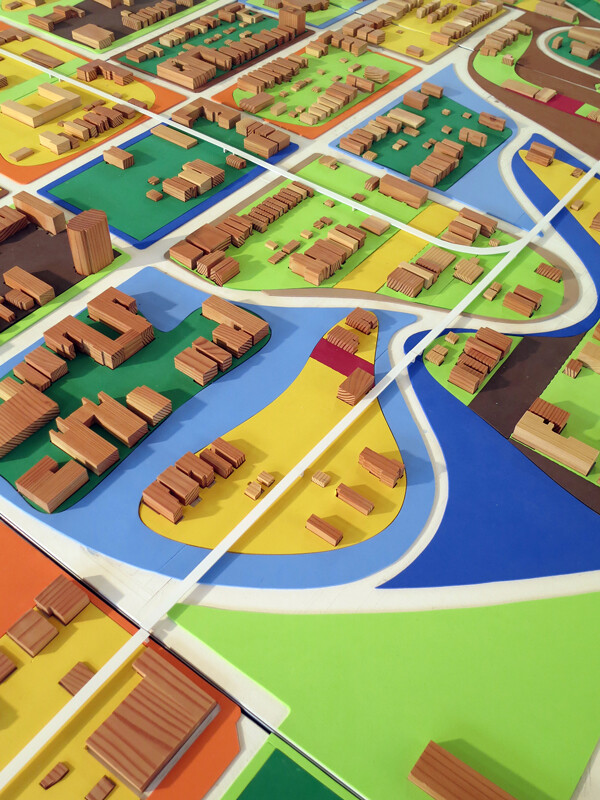

Model photograph of Marshall Brown Projects, Inc., Smooth Growth®, 2012–2017.
And yet, for all of the ways that neighborhoods form and shape the outcomes of its residents, it is often the architecture that is closest to us that we fail to pay attention to. Whereas the voting booth channels our focus to become abstract, the spaces we most commonly inhabit shape our civic life in more oblique ways. How might we cut through our perceptual distraction in order to more precisely tune into these spaces that have escaped attention—attention that may be visual, social, economic, haptic, civic, aesthetic, or political in nature? We might look to architect Marshall Brown’s 2012–2017 plans for rethinking the vacancies endemic to Chicago’s Washington Park neighborhood as one model. His plan approaches open lots not as a problem to be fixed, but as a possibility for continued inhabitation. Instead of seeking to remake existing urban grids so as to attract new residents or to plug in the holes left behind by the neighborhood’s declining population numbers, Brown insists on rebuilding the streetscape around the paths and patterns crafted by the residents who have remained there. “The absence of growth,” Brown insists, “must no longer be an obstacle to the improvement of neighborhoods.” Proposing the bundling of abandoned lots so that they can be cared for by residents without the burden of ownership or homeowner associations, Brown proposes we look closer at what exists before leaping to remake or renew neighborhoods—actions which have historically helped to displace existing residents rather than improve how they live. Nestled within Brown’s spatial plan for Washington Park is an attempt to rethink the scale of citizenship by promoting an understanding of the civic as rooted through inhabitants rather than the state and informed by the present rather than an ever-deferred futurity.
If we have focused on the ways architecture obliquely shapes our habits of citizenship as well as how various forms of occupation—in art, protest, and planning—both work within and against states of distraction mediating our routine perception of the built environment, I want to end with a brief meditation on a building type that asks us to explicitly attend to its staging of citizenship—the national pavilion. Nations have used architecture to demonstrate their strength and solidity since the walled city-state. But the emergence of the state pavilion as a global form for mass display at the 1893 Columbian Exhibition in Chicago marked a new phase of statecraft explicitly wielding architecture’s ideological clout. Whereas the city wall demonstrated a nation’s hard power by marking its ability to defend itself, the state pavilion designed to reflect a distinctive national style marks architecture’s increasing soft-power within a global network of power and prestige.


W.E.B. Du Bois, [The Georgia Negro] City and rural population, 1890. Source: Library of Congress Prints and Photographs Division.
State pavilions also tend to reflect who is considered central to a nation’s conception of citizenship in often blunt ways. Take, for instance, the absence of African Americans from the exhibits hosted by the American pavilion built for the Paris World’s Exhibition of 1900. While African American intellectual W.E.B. Du Bois helped to curate the “Exhibit of American Negroes,” which was funded by the US Congress, it was housed not within the American pavilion, but within the Palace of Social Economy and Congresses. Yet as we’ve learned from citizenship’s varying scales, vacancy is not necessarily a marker of deficiency, but of the possibility for making and enduring. And Du Bois’s exhibit demonstrates just this: while few can recall the neo-classical state building that officially represented the US, he produced an exhibit of photography and avant-garde info-graphs that continue to circulate and captivate audiences over a hundred years later. If the American pavilion at the Paris World’s Fair represented the state’s vision of citizenship as statically neo-classical, Du Bois’s exhibit offers a counter-vision of citizenship that asks us to toggle between other scales, viewpoints, and mediums in order to bring other forms of participation into view. If the scale of citizenship epitomized by the modern-day voting booth validates the individual citizen, we find other architectures large and small, temporary and permanent, imagined and real, being wielded in ways that challenge this singular scale and its attendant habits. Rather than periodic sequester, the built environment holds the power within it to reframe citizenship as a practice of spatial, social, and perceptual expansion that demands new forms of attention.
Lauren Berlant, “Citizenship.” In: Keywords for American Cultural Studies, eds. Bruce Burgett and Glenn Hendler (New York and London: New York University Press, 2014).
Walter Benjamin, “Work of Art in the Age of its Technological Reproducibility,” (1936), trans. Edmund Jephcott et al. In: Selected Writings Volume 4 1938–1940, eds. Howard Eiland and Michael W. Jennings (Cambridge, Massachusetts, and London, England: The Belknap Press of Harvard University Press, 2003).
Elaine Hadley, Living Liberalism: Practical Citizenship in Mid-Victorian Britain (Chicago and London: University of Chicago Press, 2010), 180–181.
Benjamin, “Work of Art.”
Benedict Anderson, Imagined Communities: Reflections on the Origin and Spread of Nationalism (Verso, 1983).
Robert J. Sampson, Great American City: Chicago and the Enduring Neighborhood Effect (Chicago and London: University of Chicago Press, 2012).
Dimensions of Citizenship is a collaboration between e-flux Architecture and the United States Pavilion of the 16th International Architecture Exhibition at La Biennale di Venezia.
Category
Subject
Dimensions of Citizenship is a collaboration between e-flux Architecture and the United States Pavilion of the 16th International Architecture Exhibition at La Biennale di Venezia.
.png?w=1200)
.png,1600)
.jpg,1600)


